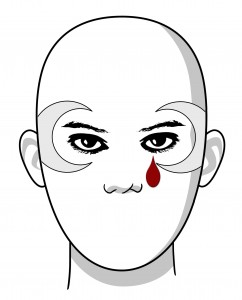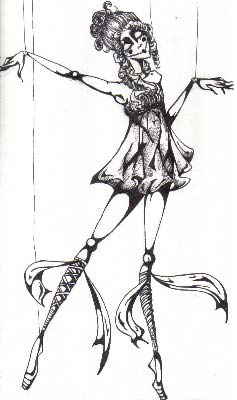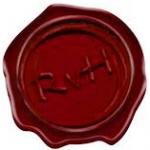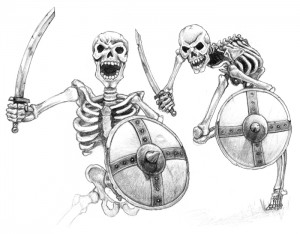This Guide will be a departure from the previous entries. In the spirit of the month of Enlightening (Editor’s Note: this article was received in Enlightening, but is only being published now), I will be enlightening you with Knowledge regarding the Incarnations and the Allegiant. This essay will also touch upon the Bloodwaters.
Incarnations
The Incarnations are embodiments of the most important concepts in Magesta. There are many minor Incarnations, but the Great Incarnations technically number 17. The chart below contains 19, though it should be noted that the Creator is technically not an Incarnation (currently) and Death and Dream are technically the same liminal Incarnation. Usually, the Incarnations are counted as 18, counting Death and Dream separately and excluding the Creator.
It is from the Incarnations that we derive the days of the week and the months of the year. Since many members of town often struggle remembering the names of months, this chart includes the previous Age’s month names as well.
Age Years Incarnation Day
Creation 117?* The Creator Shapingday
Dream / Repose 3613 Dream Dreamingday
War 1005 War Battleday
Tears 5375 Fear Weepingday
Gathering 2877 Community Gatheringday
Arrival / Waking 2007 Faith Wakingday
Fortune 125+ Fortune Fortuneday
Incarnation Month Old Month(Age of Arrival)
Nature Newgreen Impril
Music Petalsong Maygrelian
Knowledge Enlightening Ogrune
Magic Suncast Gobly
Peace Stillbreeze Gnomegust
Labor Harvestwane Elftember
Death Reapingdusk Orctober
Evil Boneharvest Dwarvember
Law Greysky Drakember
Chaos Ravingfrost Humanuary
Memory Reminiscence Faebruary
Life Bloodthaw Marchestry
*Some scholars argue that since Death did not exist until the Age of Repose, measuring time for the Age of Creation is meaningless.
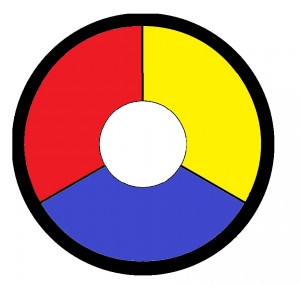 The Allegiant
The Allegiant
The Allegiant is an organization dedicated to worshiping, serving, and giving Agreement to the Incarnations. The Allegiant categorizes the Incarnations into three groups: the Head, the Heart, and the Hand.
Each of these three groups is tied to a different color of the Bloodwaters. While the Incarnations are manifestations of phenomena important to Magesta, the Bloodwaters are a sentient manifestation of the entire universe. There are five colors of the Bloodwaters, but only three are accessible from Magesta.
The Blue Bloodwaters are Spirit. Blue is the color of the Heart. The Heart is living. The Heart is emotion. The Heart is passion. The Heart sways rationality and gives drive to action. The Heart is Chaos, Death, Faith, Fear, Life, and Music.
The Red Bloodwaters are Magic and Energy. Red is the color of the Head. The Head is consciousness. The Head is reason. The Head is methodical. The Head is drive. The Head gives order to action and tempers emotion. The Incarnations of the Head are Dream, Memory, Knowledge, Magic, Evil, and Law.
The Yellow Bloodwaters are Time. Yellow is the color of the Hand. The Hand is action. The Hand is work, though not necessarily manual labor. The Hand is follow-through. The Hand is consequence. The Hand gives a means to both passion and ambition. The Hand is Community, Fortune, Labor, Peace, Nature, and War.
There are those in the Allegiant who serve all the Incarnations, but most Allegiant members are drawn to either the Head, the Heart, the Hand, or to one Incarnation in particular.
If you are interesting in learning more about the Incarnations and the Allegiant, please seek out one of the following people:
Oliver Finnestera, Minister of the Elmerton Allegiant
Rybin vanHolt, Cordent of the Head
Sebastian Dark, Yeoman of the Hand
Asmondaious, Confessor of the Heart
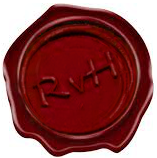
Yours in Knowledge,
Rybin vanHolt
Historian and Scholar


